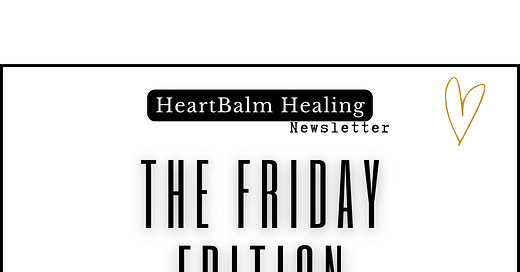The Many Faces of Anxiety: Understanding Its Depths and Links to Freedom
The Friday Edition | No. 25
The Many Faces of Anxiety: Understanding Its Depths and Links to Freedom
“Anxiety is the dizziness of freedom.”
The quote above is attributed to Danish philosopher Søren Kierkegaard and simply encapsulates the complex nature of anxiety. Explored in his book "The Concept of Anxiety," Kierkegaard believed that anxiety is a natural human emotion that arises from our awareness of the infinite possibilities available to us. He likened this feeling to "dizziness," describing it as overwhelming and disorienting. When faced with too many choices or possibilities, anxiety can stem from the fear of making the wrong decision or missing out on something better, leading to feeling paralyzed, frozen, or unable to make a decision.
Kierkegaard, however, saw anxiety as an intrinsic part of human existence. He believed that it forces individuals to confront their freedom and take responsibility for their choices, viewing it as a necessary step towards personal growth and self-realization.
Anxiety is not merely a feeling of worry or nervousness but rather a condition that encompasses a wide range of experiences, from mild unease to overwhelming panic. At its core, anxiety is the body's natural response to stress or perceived threats, activating the fight-or-flight response. However, when this response becomes persistent or disproportionate to the actual threat, it can lead to various levels and faces of anxiety disorders. It is intricately linked to stress, depression, PTSD, and CPTSD.
Anxiety is often born of trauma experiences leading to a “hyper-vigilant-preparation-loop” where you overanalyze situations out of fear of what will happen if you are not prepared for it.
Anxiety is broken down into the following sub-categories:
Generalized Anxiety Disorder (GAD): This is characterized by persistent and excessive worry about various aspects of life. Individuals with GAD often experience uncontrollable and irrational anxiety about everyday things.
Panic Disorder: Those suffering from panic disorder have recurring and unexpected panic attacks, which are intense periods of fear or discomfort that peak within minutes. The fear of these attacks can significantly impact daily life.
Social Anxiety Disorder: People with social anxiety have an intense fear of social situations. They might feel scrutinized, judged, or embarrassed, leading to avoidance of social interactions.
Specific Phobias: These are intense and irrational fears of specific objects or situations, such as fear of heights, animals, or flying. These fears can lead to significant distress and avoidance behaviors.
Obsessive-Compulsive Disorder (OCD): Anxiety manifests through intrusive thoughts or obsessions, leading to repetitive behaviors or compulsions as a means to alleviate the anxiety caused by these thoughts.
Post-Traumatic Stress Disorder (PTSD) and Complex PTSD (CPTSD): These conditions develop after experiencing a traumatic event. PTSD involves re-experiencing the trauma through flashbacks or nightmares, while CPTSD, which arises from prolonged trauma, might involve a broader array of symptoms, affecting one's identity and emotional regulation.
Keep reading with a 7-day free trial
Subscribe to HeartBalm to keep reading this post and get 7 days of free access to the full post archives.




